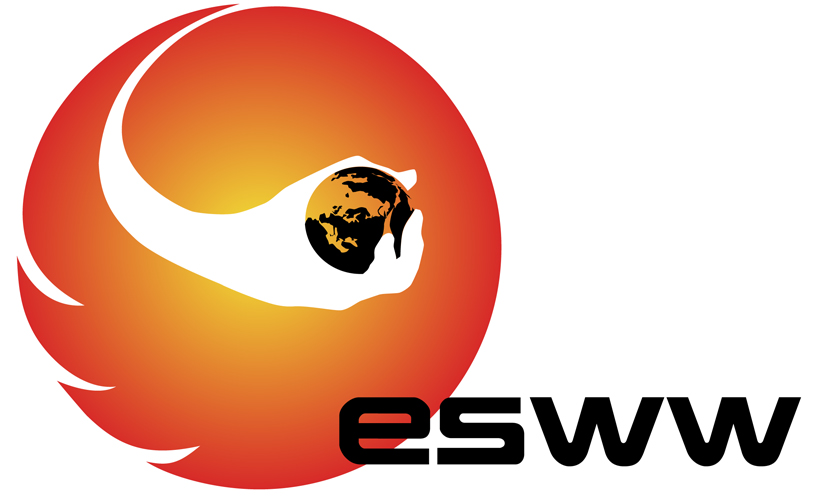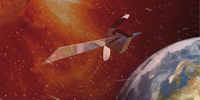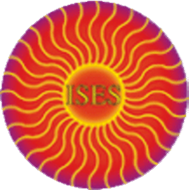
15-19 November, 2010 - Brugge, Belgium
Space Weather Fair
This year's event will also include a space weather fair, where users and service providers will have the opportunity to interact in an informal working environment.
The fair is an opportunity for non-academici to profile their activities and learn what there is to know in the field of Space Weather.
Stand Holders
| BRAMS | H. Lamy | BIRA/STCE, Belgium |
| BRAMS is a new radio observerving facility to detect and characterize meteors. BRAMS includes 2 beacons located in Dourbes and Ieper, Belgium, emitting a VHF monochromatic wave around 50 MHz, and of 20-25 receiving stations spread over Belgium. During the fair, the principle of meteor detection with radio techniques will be explained and illustrated with a receiving station set up. Visitors will have the possibility to see but also liten to meteor echoes. | ||
| Solar Dynamics Observatory | V. Delouille | ROB, Belgium |
| Matroshka | T. Berger | DLR, Institute of Aerospace Medicine, Germany |
|
One of the main constraints for long-duration human missions is radiation. The radiation load on space travellers
is a factor of ~100 higher than the natural radiation exposure on Earth and it might further increase due to solar
particle events should humans travel to Mars. In preparation for long-duration space missions, it is important to
evaluate the impact of space radiation in order to secure the safety of astronauts and minimize their
radiation risks. To determine the radiation risks on humans one has to measure the radiation doses to vital
organs of the human body. One way to realize this is the utilization of the ESA facility MATROSHKA (MTR), which houses a human phantom and is operated under the scientific project lead of the German Aerospace Center (DLR). The facility was launched in January 2004 and is just performing its fourth experimental phase - now inside the Japanese Experiment Module (JEM). The MATROSHKA project is dedicated determining the radiation load on astronauts when staying within or outside the International Space Station (ISS). The MTR phantom is equipped with over 6,000 radiation detectors to determine the depth dose and organ dose distribution in the body. It is the largest international research initiative ever performed in the field of space dosimetry and combines the expertise of leading research institutions around the world, thereby generating a huge pool of data of potentially immense value for research. Aiming at optimal scientific exploitation, the FP7 project HAMLET http://www.fp7-hamlet.eu intends to process and compile the data acquired individually by the participating laboratories of the MATROSHKA experiment. The twin of the MATROSHKA phantom is currently used on ground for an extensive radiation physics and radiation biology research programme at various heavy ion accelerator facilities around the world (as GSI, Darmstadt, Germany; HIMAC, Chiba, Japan) as well as for measurements of the depth dose distribution onboard airplanes. | ||
| EISCAT_3D - European volumetric imaging incoherent scatter radar | E. Turunen | EISCAT Scientific Association, Sweden |
|
Videos and animations on the current ideas for EISCAT_3D will be shown at the ESSW fair stand. The power of 3D visualisation will be demonstrated to the fair visitors by showing the unique 3D movies "Aurora**2" by Brian McClave and George Millward, and "Sun 3D", a collaboration with Rutherford Appleton Laboratory using the NASA STEREO mission.
EISCAT_3D will be the next-generation radar for the high-latitude atmosphere and geospace research, with capabilities going beyond anything currently available in incoherent scatter radars (ISR). The use of distributed solid-state power amplifiers in the transmitters will provide continuous operation modes - a totally new dimension to Space Weather related research and services provided by ISRs. The facility will consist of large phased arrays in three countries, comprising tens of thousands, up to more than 100 000, individual antenna elements. EISCAT_3D will combine capabilities for volumetric imaging, tracking and aperture synthesis imaging, realised by a multistatic configuration, with improved sensitivity and transmitter flexibility. At the passive sites, the design allows the full extent of the transmitted beam to be imaged using holographic techniques. EISCAT_3D will be modular, allowing an active array to be split into sections for imaging. The result will be a new data product, range-dependent images of small structures, with sizes down to tens of metres. Aurora**2 is the first successful stereoscopic video of the Aurora Borealis, or Northern Lights. The 3D film, made for gallery projection, clearly shows the structure and movement of this illusive and spectacular phenomena. The project was a collaboration between Brian McClave and physicist George Millward. The work was initially carried out at Sodankyla Geophysical Obsevatory in Finland. Sun 3D is the result of a collaboration with space scientists at theRutherford Appleton Laboratory. Working with images coming directly from the NASA STEREO mission, Sun 3D explores the surface of the Sun in 3D for the first time. This work is shown alongside the Aurora project 3D video. The dynamic mass ejections from the Sun's surface being the energy bursts that ultimately cause the Aurora, when coming into contact with the Earth's magnetic field and atmosphere. | ||
| PROBA2: preliminary results of LYRA and SWAP | D. Berghmans | ROB, Belgium |
| PROBA2 is the first ESA space weather micro-satellite with onboard SWAP and LYRA, two scientific solar instruments. The PROBA2 Guest Investigator Program offers visiting scientists the opportunity to work at the PROBA2 Science Centre and explore the science in SWAP and LYRA. We present the facilities of this program and the first results. | ||
| The Solar-Terrestrial Centre of Excellence | S. Raynal | STCE, Belgium |
|
The Solar-Terrestrial Centre of Excellence, STCE is a scientific institute focussing on the Sun, through space,
up to the Earth and it's atmosphere. The solid base of the STCE is the existing experience in fundamental solar and earth atmospheric physics research, the involvement in earth-based and space missions, a broad variety of space weather linked services and a fully operational eligible space weather application centre. The scientists act at different levels within the frame of internal, national and international collaborations of scientific and commercial oriented partners. The STCE benefits also from the platform of interaction offered through the ESA (SWWT, SWENET), EU (COST, FP7) and others (ISES, ...). The STCE skills are based on know-how, sharing knowledge, man power, infrastructure and a reliable network in the field Sun-Space-Earth. | ||
| SPENVIS | M. Kruglanski | BIRA-IASB, Belgium |
|
The Space Environment Information System (SPENVIS) provides standardized access to most of the recent models of the
hazardous space environment, through a user-friendly Web interface. The system allows spacecraft engineers to perform a
rapid analysis of environmental problems related to natural radiation belts, solar energetic particles, cosmic rays, plasmas,
gases, magnetic fields and micro-particles. The system includes several engineering models to assess problems such as
surface and internal charging, energy deposition, solar cell damage and single event upset (SEU) rates. Various reporting and
graphical utilities and extensive help facilities are included to allow engineers with relatively little familiarity to produce
reliable results. SPENVIS also contains an active, integrated version of the ECSS Space Environment Standard and access to
in-flight data on the space environment. SPENVIS is an ESA operational software developed and maintained at Belgian Institute for Space Aeronomy. It is accessible through the URL http://www.spenvis.oma.be/. The use of SPENVIS will be demonstrated with highlights on the last developments and implemented models. | ||
| Developing the scientific basis for monitoring, modelling and predicting space weather | J. Watermann | COST, France |
| The book "Developing the scientific basis for monitoring, modelling and predicting space weather", ed : J. Lilensten, A. Belehaki, M. Messerotti, R. Vainio, J. Waterman and S. Poedts is presented. | ||
| DIAS | A. Belehaki | National Observatory of Athens |
| The DIAS system is the European Digital Upper Atmosphere Server developed in the frames of the EC eContent Programme. The system has been recently upgraded to provide a full set of data, products and services in real-time that specify and forecast ionospheric conditions over Europe. During the fair the operation of the DIAS system and the range of ionospheric products will be explained. The functionality of the DIAS portal http://dias.space.noa.gr will be also demonstrated. | ||
| ULISSE: space data management | Ulisse Consortium | |
| First Demo Session for ULISSE Project will be presented in the context of Space Weather topics with a strong focus on user involvement. A relevant part of the project foresees that data, services and tools are integrated through the ULISSE middlleware platform, supporting actions for the dissemination of space culture, knowledge sharing and cooperation improvement. Since the direct access to the data and metadata is one of main features of ULISSE platform, this will be done through ULISSE API and Geonetwork, particularly with data Belgium solar data base and radio waves diagnostics of ionosphere gathered by Polish radio spectrometer located on CORONAS-I. The audience will get familiar with one of ULISSE System components, ScienceCast tool, which will demonstrate the possibility of domain knowledge representation and power of semantic search. | ||
| Rhea: solutions for the space industry | Gareth Lawrence | Rhea |
|
RHEA is an independent Space Engineering Consulting and Software company
offering knowledge-based services and innovative solutions to the space
industry. RHEA has supported over 37 space missions in the last 15 years,
with customers and partners including ESA, Eumetsat, EADS Astrium, Thales
Alenia Space and others. Rhea provides engineering solutions in spacecraft
Assembly Integration and Test (AIT), spacecraft and payload operations,
ground segment definition, on board software development, system engineering,
mission analysis and radiation analysis. Core competencies in areas such
as: * Space Environment Analysis * Radiation Effects Analysis * Space Radiation Environment Tools * Scientific Analysis of Particle Radiation Models have made RHEA a recognised leading European industrial prime in the areas of space weather and space environment, and well suited for industrial roles within ESA's Space Situational Awareness framework. | ||
| HELIO, the Heliophysics Integrated Observatory | M. Messerotti J. Abourdarham R.D. Bentley |
INAF-Trieste, Italy Observatoire de Paris, France UCL-MSSL, UK |
|
HELIO is a Research Infrastructure funded under the
Capacities Specific Programme within the European Commission's
Seventh Framework Programme (FP7; Project No. 238969). The project started on 1 June 2009 and has a duration of 36 months. HELIO will be a key component of a worldwide effort to integrate heliophysics data and will coordinate closely with international organizations to exploit synergies with complementary domains. In particular, HELIO will deploy a new distributed network of services that will allow to explore the Sun-Solar system connection, providing a joint access to solar, heliospheric, magnetospheric and ionospheric observations as well as to events and features catalogues. We will demonstrate a prototype of this new capability. | ||
Practical Information
The fair takes place on Wednesday Nov 17, 16:30-18:30 in the poster/coffee area.
If you want to have a stand, please contact Petra Vanlommel. The deadline for requests is November 01, 2010







